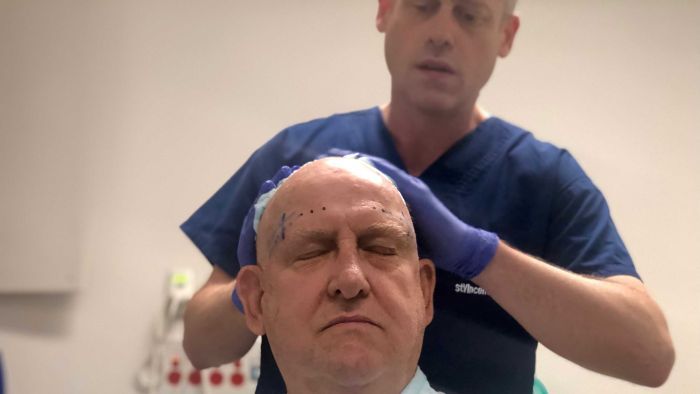Focused Ultrasound
Focused ultrasound (FUS) is a non-invasive technology to ablate a small volume of the globus pallidus region of the brain to reduce dyskinesia. While the procedure requires no surgery and is more easily tolerated than alternatives such as deep brain stimulation, it is irreversible.
During the FUS procedure, a patient is awake. No general anesthesia or surgical incisions are involved. Doctors use MRI brain scans to direct ultrasound beams to the target brain location.
Focused ultrasound typically decreases symptoms immediately. It does not require adjustment, programming or additional procedures. But it is irreversible and permanent.
When done on both sides of the brain, FUS may cause speech, swallowing or memory problems. So doctors only do the procedure on either the right or the left. (This means it only helps symptoms on one side of the body.) Other potential side effects include rare bleeding or skin infection.
Why Focussed Ultrasound
Focused ultrasound may be an option in people who can’t or don’t want to pursue deep brain stimulation. Some are unable to undergo invasive surgery because of heart or bleeding problems. Others aren’t DBS candidates because of memory and thinking problems. Still, others don’t want to manage the logistics of DBS programming and future battery replacements. Focused ultrasound expands the available treatment choices for patients and doctors.
Earlier this year the procedure was performed at St Vincents Hospital in Sydney to treat essential tremor. Watch an ABC report on the procedure.
Focused Ultrasound vs. Deep Brain Stimulation
Focused ultrasound and deep brain stimulation (DBS) are both surgical procedures for Parkinson’s. Both are FDA-approved to treat tremor that does not benefit from medication. DBS also is approved for Parkinson’s movement symptoms and dyskinesia, and clinical trials are evaluating FUS for these same indications.
Focused ultrasound and DBS work in the same brain areas but in different ways. FUS destroys cells, and DBS delivers small electrical pulses to those same cells to interrupt abnormal signalling. FUS is permanent and irreversible, while DBS may be reversed by removing the system or turning it off. Focused ultrasound is non-invasive — there are no incisions and no hardware is placed in the body. For DBS surgery, doctors make incisions in the skull to insert wires in the brain and in the chest to place a battery below the collarbone. FUS is a one-time procedure that does not require adjustment. DBS needs programming to find the right electrical stimulation settings to maximize benefit and limit side effects.
Research into Focused Ultrasound
In 2018, the U.S. Food and Drug Administration (FDA) approved focused ultrasound to treat Parkinson’s tremor that cannot be controlled with medication. Recently, the treatment gained an expansion of FDA approval to include other Parkinson’s symptoms, such as stiffness and slowness, as well as dyskinesia, which is involuntary, uncontrolled movement. (MJFF funded early work on focused ultrasound for dyskinesia.)


